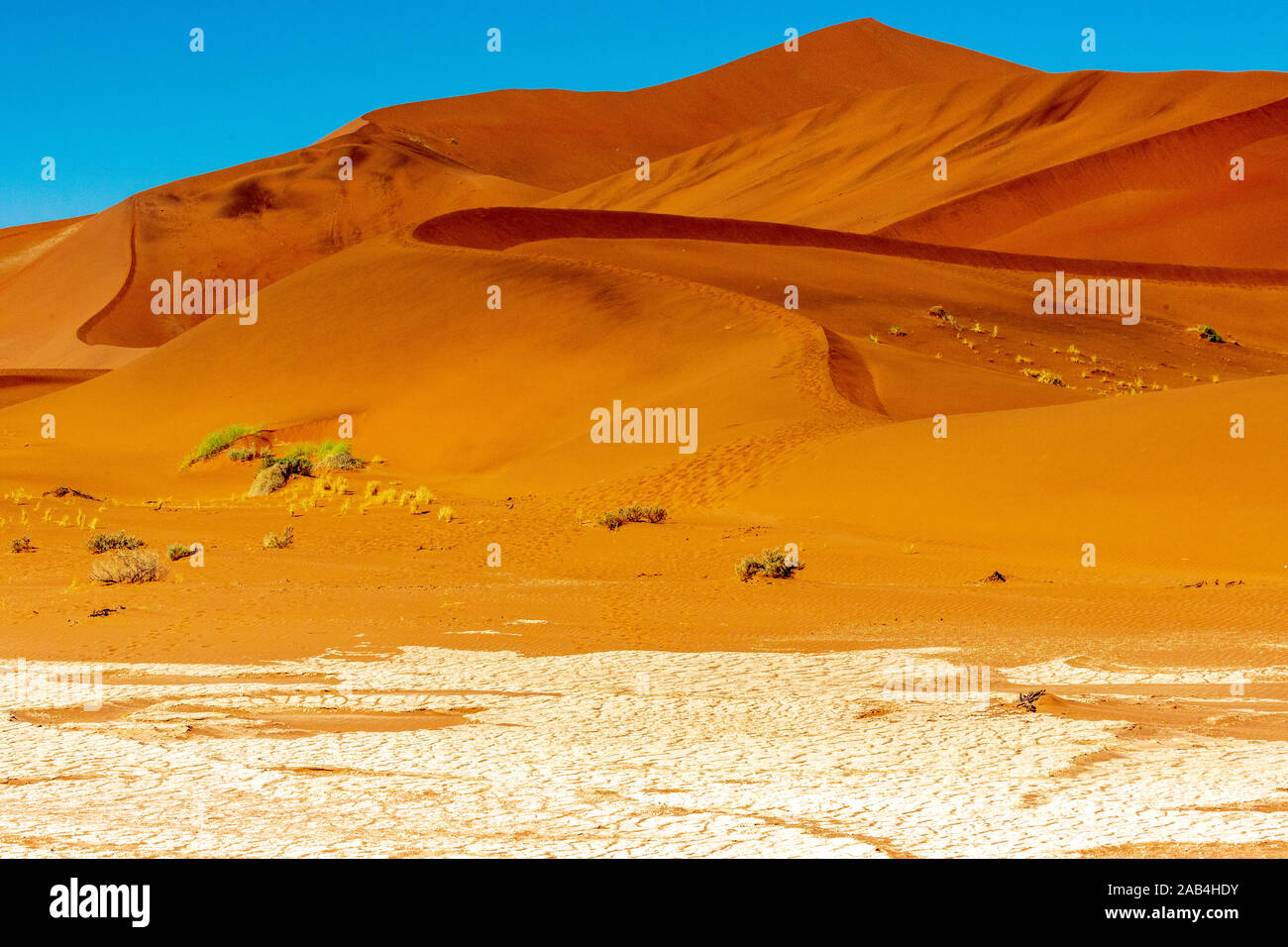

The massive size of these dunes means that they are best appreciated from a light plane. When two wind directions become important linear dunes begin to form and in the Namib Sand Sea these often have a complex, reticulate form. When the sand supply is higher and the winds are still from one direction then transverse dunes develop again these are common along the coast, best seen on the southern side of the road from the Rooikop airport going into Walvis Bay. These are common near the coast where the sand is emerging from the sea and can move at over 60m per annum, as along the coastal road in the Skeleton Coast Park north of Walvis Bay. Strong, unimodal winds in an area of limited sand produce barchan dunes. The difference in dune types generally reflects changing winds and sand supply. On satellite images all the major dune types can be recognised, as well as numerous intermediate forms. A stream of dunes advances northwards from here, but only as far as the next major river 30 km to the north, the Swakop, where they are finally stopped. However, near the coast where the winds are stronger and more persistent, the dunes are winning the battle. One of the first images returned to earth by astronauts was of the sand sea terminating abruptly against the Kuiseb river, an ephemeral river that flows just often enough to keep the major part of the dunes south of it. Viewed from any scale the Namib sand sea is a fascinating place. Large numbers of springbok, and ostrich (photo courtesy of Roger Swart) are commonly found, along with gemsbok (oryx) (photo courtesy of Frank Vassen) and zebra (photo courtesy of Frank Vassen). Wildlife is common in the Namib despite its aridity. This, although minuscule, is the main source of moisture for the plants, invertebrates and mammals living on the Namib coast, which have devised creative ways of collecting and utilising the limited amount of moisture available. Thirdly, intensification of the aridity is caused by the cold waters of the Benguela upwelling system locking up moisture in regular, low, thick cloud banks. Secondly, the location of the high pressure system means that the Namib has warm dry air settling over the land for much of the year. These three factors are its location on the south-western side of Africa, the fact that it underlies the South Atlantic anti-cyclonic high and that it lies adjacent to the cold Benguela upwelling system.įirstly, moisture-bearing winds from the warm Indian Ocean in the east have generally lost much of their water content by the time they reach the Namib.

The aridity of the Namib is controlled by three factors, any one of which would make the Namib dry, but the combination of which make it hyper-arid. This central part of the Namib, dominated by the major sand sea, has recently been designated a World Heritage site. The high dunes of the Namib must also be the easiest dunes to access in the world. Photographic opportunities abound and photos taken in the Namib often win awards in competitions. This wide range of environments also provides many different tourist opportunities, including eco-tourism, geo-tourism, adventure tourism and casual campers. On over 100 days a year a cool coastal fog brings life-giving moisture and ameliorates diurnal temperatures, and as a consequence life abounds in this seemingly desolate environment. Within this arid zone there are many micro-environments, including dunes, rocky mountainous areas, gravel plains, perennial river mouth wetlands, coastal pans, lagoons, riparian forests and isolated springs. The Namib Desert stretches eastwards from the coast of south-west Africa as far as the escarpment of the central plateau, and extends more than 2,000 km from Angola in the north, through Namibia and southwards into South Africa. The Namib Desert is over 2,000 km long and about 150 km wide. Early morning or late afternoon is the best time for photographing the sinuous shapes of the dunes and capturing the rich colours.


 0 kommentar(er)
0 kommentar(er)
